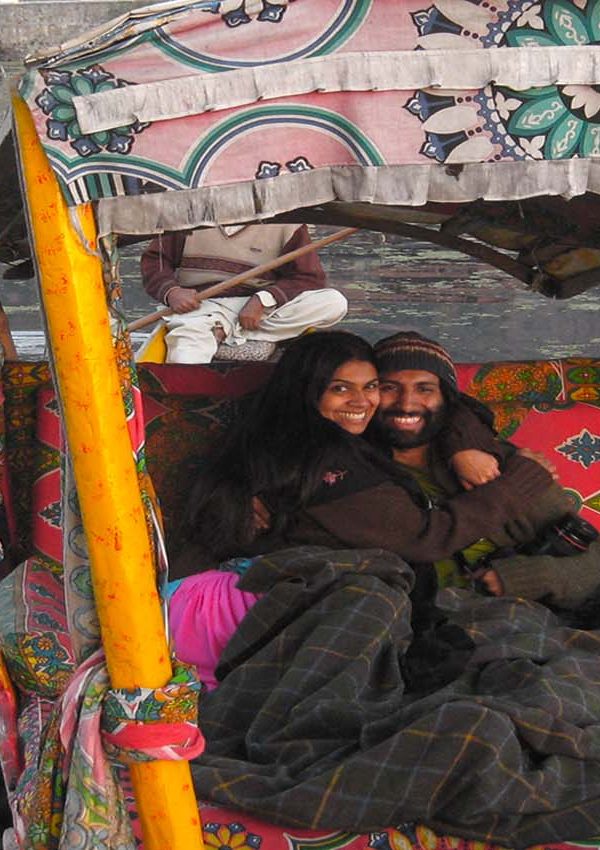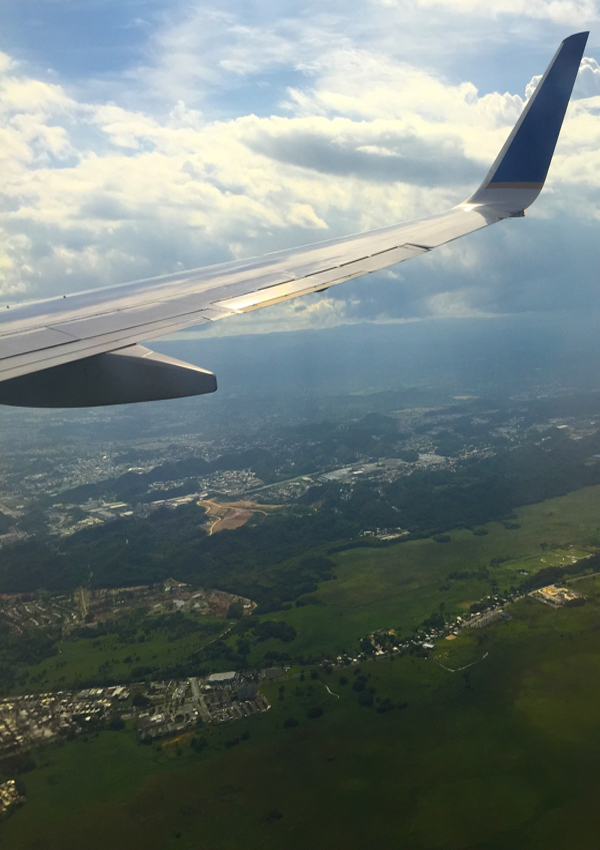
Our last few days in Puebla, we read about Popocatépetl, one of Mexico’s most active volcanoes, and decide it would be romantic to go for a little stroll there. Instead of spending 600 pesos on a shared van, or triple that for a private cab, we decide to a local bus up there for a couple pesos. With the money we saved, we have big plans to buy a piece of bread and share it like street children in a Disney film.
After many unsuccessful attempts at getting our tongues around Popocatépetl, the Aztec word for “Smoking Mountain,” finally someone told us the locals call it El Popo. Actually what the bloke said after he looked at us quizzically, wondering where we were trying to go, was, “Oh. El Popo.” The way someone attempts to understand a drunk man explaining a medical situation. Or a dog who has special knowledge of a child stuck in a well. We leave our lovely hotel, Mesones Sacrista, and walk over to the Zocalo in the darkness.
It’s early in the morning. We hop on a 40-minute bus ride for a couple pesos, and it drops us off in Cholula, right outside what turns out to be the Tlachihualtepetl temple. Not a clue how to pronounce it. We found out after we returned to our hotel that it was the largest pyramid and monument EVER constructed in the world (based on volume)! We just thought it was a really steep and pretty staircase to get to see a view of El Popo. We would make terrible archaeologists.
What we did know about the town as soon as we heard the name “Cholula” is that it’s where our favorite hot sauce is from. Another thing we discovered about this place when we arrived is that there are loads of churches here—some are tiny little ones, others are quite large. We left at around 8 in the morning on a Sunday, so as soon as we start climbing the pyramid to see El Popo, the church bells start ringing and the town below comes alive with people scattering about to walk over to different churches.
El Popo began stirring in 1994, and since then has been letting off mild explosions and steam. So the towns and villages are sometimes evacuated. This morning, steam is coming out of it. But nothing’s going to stop us now, right?
The legend associated with the volcano is quite depressing no matter which version of the story you hear. We heard two versions that were pretty similar. One of them is a slightly more dramatized and longer version of this one:
Popocatepetl was in love with Iztaccíhuatl, the daughter of the village Chief. The Chief agreed to let them get married if Popocatepetl returned from war with the head of one of the enemies of the village. A jealous tribe member sent word back to the chief that Popocatepetl had died. When Iztaccíhuatl was given the news, she died of grief. Then Popocatepetl killed himself with a dagger upon his return. Their bodies were changed to mountains, and Iztaccíhuatl’s mountain, which we could see vaguely in the distance, meant “White woman” because of the snow-capped peaks, and also referred to as “La Mujer Dormida,” the sleeping woman because it kind of looks like the chest, knees, and feet of a woman sleeping. That volcano is dormant, while Popocatépetl is an active one and explodes in a blind rage at his loss every so often.
If you’d like more tips on incredibly happy, romantic places for newlyweds to go, you know who to ask.






[…] it is about volcanoes that we find so fascinating. For our honeymoon in Mexico, we went to see our first active volcano – Popocatépetl (El Popo). We’ve seen the devastation Mount Vesuvius caused when it […]